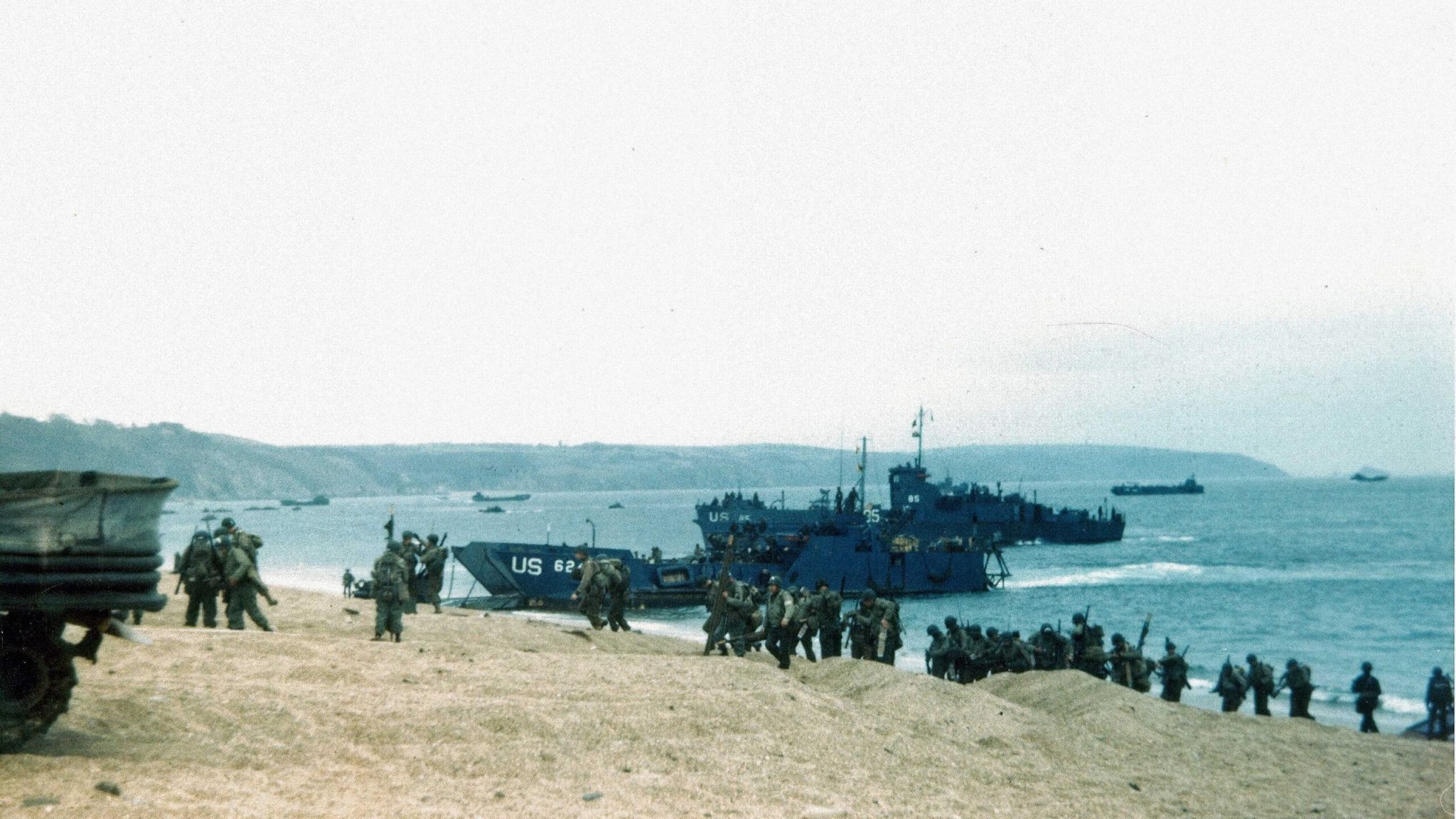

Eight decades after they died while preparing for the invasion of Normandy, more than 100 American soldiers were honored with a new monument for their sacrifice.
The cairn was unveiled on Friday, April 5 in the British county of Devon, near the Slapton Sands beach. The cairn, a small monument of stacked stones with a plaque on it, honors 110 American soldiers killed on April 27, 1944 at Slapton Sands. Those killed that day were among the hundreds who died while rehearsing the D-Day operation as part of Exercise Tiger.
The BBC first reported on the new monument. The cairn was funded by Teddy Cranmer. It’s one of the few monuments to a costly but often unheard of part of World War II. Exercise Tiger was a major undertaking by the American and British governments. Given the enormity of Operation Overlord, the planned invasion of Normandy, they decided to stage a rehearsal landing, to test expected conditions and resistance in France. While thousands of troops trained for months to prepare for the invasion, Allied forces chose the Devon coast and Slapton Sands due to their similarity to the beaches of Normandy, specifically the stretch of coast eventually dubbed Utah Beach. Initial work started in late 1943, but the main work of what would be Exercise Tiger took place in April 1944.
It was a disaster. Over the course of two days in the eight day exercise — kept under heavy secrecy to avoid tipping off the Axis Powers — hundreds of troops were killed in a combination of friendly fire and a surprise attack by German E-boats that sunk several ships.
Subscribe to Task & Purpose Today. Get the latest military news and culture in your inbox daily.
With the intent to simulate the expected German resistance, Exercise Tiger used live ammunition to give soldiers the sensory experience of enemy fire. The morning of April 27, 1944, a landing force and the nearby naval group were variously delayed. Miscommunication led to troops hitting the beaches of Devon to be hit by friendly fire, killing more than 100.
Despite the deaths, Exercise Tiger continued. The convoy of Allied ships gathered in Lyme Bay to prepare for approach to Slapton Sands. However a group of Nazi E-boats had evaded British patrols in the English Channel and spotted the convoy. Shortly after 2 a.m. they opened fire. In the brief battle, two Allied convoy ships were sunk while another two were damaged (one by friendly fire). More than 600 died on the Allied side during the “Battle of Lyme Bay.”
Given the intense secrecy around the planned invasion of France, Exercise Tiger was kept quiet, including after the disastrous two days. It wasn’t until August of 1944 that the casualties were officially reported by the Allies. The exact number killed in Exercise Tiger has been disputed over the years. The Department of Defense later said that records from the exercise were poor, from a combination of the German attack and inconsistent recording during the rehearsal landing. In total, 749 American service members died between April 27-28.
Since more information was released about the deadly rehearsal, there have been different memorials and monuments set up for those lost in April 1944. In 2019, for the 75th anniversary of Exercise Tiger, artist Martin Barraud staged a temporary installation in honor of the dead. 749 footprints were placed across the beach at Slapton Sands.
A memorial to the dead in Exercise Tiger already exists in Torcross, an American tank with a plinth, set up in 1984. However the organizers of the cairn explicitly wanted to honor the dead from the April 27 incident. The BBC, citing Hilary Cranmer (Teddy Cranmer was not able to attend the unveiling), said the goal of the new cairn was to “put the record straight,” specifically about that day, separate from the fighting on April 28.
“Near this end of Slapton Sands, early in the morning of April 27, 1944, over 100 US army personnel lost their lives on Exercise Tiger while practising for the forthcoming landings at Utah Beach, Normandy 6th June, 1944 (D-Day),” the cairn’s plaque reads. “This preceded the action off Portland the following night 28th of April 1944 in which 639 US servicemen in Convoy T4 were lost to enemy action. May they rest in peace.”
The latest on Task & Purpose
- Air Force special operators must take class before getting shaving waivers
- Camp Pendleton Marines encouraged to fix their own barracks rooms
- 101st Airborne soldiers are first to receive new Next Gen Squad Weapon
- Air Force fires commander of Holloman maintenance group
- Army investigating Nazi imagery on Special Forces patch posted online
